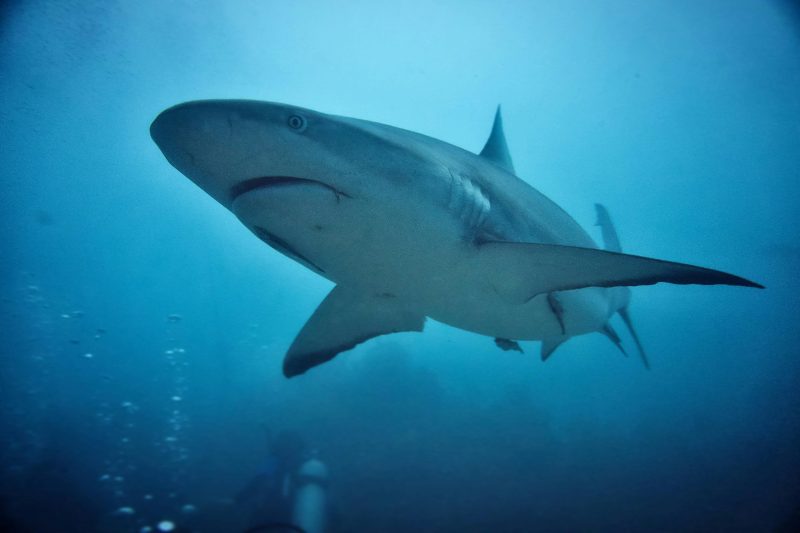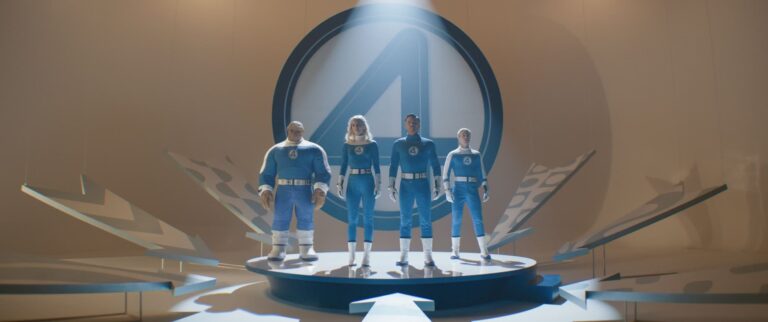Jaws 50th Anniversary: Jawesome Books That’ll Make You Need a Bigger Bookbag
Well, Jaws’ 50th anniversary has come and gone. Half a century on, Steven Spielberg’s blockbuster adaptation of Peter Benchley’s bestseller has aged flawlessly, simply because it represents a splendid cinematic depiction of a primal human fear. We don’t belong in the ocean, we can’t inhabit it comfortably, and there’s nothing more chilling than being hunted by something that does.
And, when it’s done right, there’s nothing more thrilling than a tale of humans taken out of our natural habitat (i.e., the one of our artificial making) and forced to contend with the deadly creatures that are at home in a strange environment. As we celebrate Jaws’ 50th anniversary, here are five novels that have milked this primal phobia for all its worth.
1. Sphere (1987)
Michael Crichton is certainly the most natural author to include on this list, considering that his bibliography was also mined for a stellar Spielberg classic. But Sphere is no Jurassic Park. It’s by far the weirdest book on this list, and also the best. It tells the story of a team of scientists commissioned for a Navy expedition to the ocean floor, where lies the wreck of a gigantic, centuries-old spacecraft. Surely it could only be an alien ship, right? The twists in Sphere get crazy even before the titular object enters the picture.
Sphere is the novel in which Crichton truly outdid himself. The scientific verisimilitude is extremely ambitious even by his standards (the comprehensively-realized deep-ocean setting feels alien enough without the inclusion of an ancient spacecraft), and considering his general reputation for simplistic and sometimes mean-spirited characterizations, it’s inspiring to note how well and how humanely the characters’ complexities are interwoven with Sphere’s surreal storyline.
What makes Sphere the best thriller on this list is its appreciation of inexplicable phenomena. There’s enough deadly marine life to give any ocean-lover pause about their next beach trip, but the menace of the novel’s extraterrestrial entities represents the epitome of how helpless we human beings are when we’re out of our element. Sphere is out to remind us that no matter how great the movies are at imagining ways aliens might try to kill us, real-life alien contact might affect us in ways that even our brightest scientists can’t predict. At least the marine biologist in Jaws knew what his species was up against.
2. Twenty Thousand Leagues Under the Seas (1870)
Undersea adventures don’t get much more iconic than this Jules Verne classic, in which a marine biologist is captured by the enigmatic and misanthropic Captain Nemo, inventor of the world’s first submarine, which whisks him down to depths that no scientist has yet been able to study.
And by “yet been able to study” I do mean as of 1870. Jules Verne was the 19th century’s greatest master of technological prescience. By this point in his career, he’d already sent men to the moon, so it wasn’t much of a stretch for him to refine the primitive design of existing submarines into a machine strikingly reminiscent of those that wouldn’t be invented for decades to come.
But, as fascinating as all of Captain Nemo’s technical disquisitions may be, even they pale in comparison to the headspace of a marine biologist who gets to explore life undersea for the first time. The novel catalogues literally dozens of fish species in great zoological detail, and when that wears a little thin, it throws in a shark hunt and a giant squid attack to get your pulse pounding.
The fact that the giant squid, the most iconic element of Twenty Thousand Leagues Under the Seas, has only barely been glimpsed alive even today speaks to how timeless Verne’s tale truly is. At the end of the novel, Verne quotes the Hebrew Bible as saying: “That which is far off and exceeding deep, who can find it out?” It’s been 3,000 years since that query was first made and 150 years since Verne quoted it, and now, on Jaws’ 50th anniversary, we still know too little about the deep ocean to call ourselves the ones who’ve found it out. No wonder Jaws still terrifies us.
3. Invasive Species (2013)
Now, it’s time to leave the ocean behind: you can’t get out of the water to escape the threat of this novel. Speaking of the unfamiliar: Why in the world is this novel so obscure? You won’t find its name nor the name of its author, Joseph Wallace, on Wikipedia, and you’ll have to search carefully elsewhere because it shares its title with a bunch of other thrillers. It deserves so much more visibility, because it’s awesome.
The big, bad killer creatures in Invasive Species are wasps. They’re huge, they’re deadly, and with their West African jungle home under threat from loggers, they’re starting to look for pastures new. The thing about these wasps is, they need to hatch their offspring out of the bodies of mammals – and they have a special taste for primates.
And just think: For most of human history, we’ve prided ourselves on being Earth’s most abundant primate. This is a novel that knows this, and it’s of the conviction that we will sooner or later be mercilessly punished for our species-wide arrogance. With its insidious titular threat, well-drawn cast of characters, and disquieting allegories for the real-world ecological crises we now face, Invasive Species is a true hidden gem of zoological horror.
4. Congo (1980)
Michael Crichton’s second entry on this list is to great apes what Jurassic Park is to dinosaurs: a groundbreaking techno-thriller in which cutting-edge scientific research brings mankind into conflict with ancient, deadly animals.
Deep in the Congo rainforest, the ruins of an ancient city hold untapped diamond mines that are vital to the future of superconducting computing. The Earth Resources Technology Services corporation will stop at nothing to be the first to reach them, even after its first expedition is slaughtered by mysterious simian attackers. Accompanied by a primatologist and his sign-language-fluent gorilla, a second team ventures into the most remote region of Africa to confront the unknown horrors that dwell there.
As with much of Crichton’s oeuvre, Congo provides a stark warning against human egotism in the face of nature’s might. In this case, the threat is so terrifying because it comes from the animals that are most like us. Let’s just say that underestimating the brainpower of killer apes may be the last mistake these explorers will ever make. It’s a shame that this novel was ultimately adapted into a jungle-flick campfest instead of the serious, borderline horror tale it was on the page; I for one am hopeful that Congo will get a cinematic redo one day.
Relic (1995)
The last novel on this list is in a way the most Jaws-esque. Just swap an idyllic summer vacationer’s island for a major urban museum, and a killer shark for… Well, discussing the nature of Relic’s monster would actually constitute a spoiler, but suffice it to say that this creature is monstrous indeed.
Ever since a certain shipment came in from the Amazon, some gruesomely mutilated bodies have been turning up in the museum’s darkest corners, but there’s a big exhibition coming up, and it’s not really necessary to postpone the festivities, is it? The higher-ups certainly don’t think it is, so it’s up to some plucky scientists and a handful of smart cops to figure out what this creature is and how to stop its grisly rampage.
While it certainly adheres to most of the formulas of the creature-horror genre, Relic is still a smartly written thriller that makes effective use of its cavernous museum setting and features an extremely original take on the trope of genetic engineering gone nightmarishly awry. Its bizarre sci-fi concepts culminate in a quietly chilling twist ending.
Final Thoughts
Looking back over this list, it’s startling to notice how many of the novels on here interweave state-of-the-art or even futuristic sci-fi technology with deadly-creature action. Is there something fundamentally thrilling about the juxtaposition of primal threats with the most stunning accomplishments of our civilization?
I think there is, and I think the connection is a lot more profound than that, too. The more our technology separates us from our wild roots, the more we need great storytellers to remind us how vulnerable we are in the absence of all our modern creature comforts. In the year of Jaws’ 50th anniversary, we need such cautionary tales more than ever.
In other words, as we move into the future, the potential for great stories of natural wrath will only get riper. What will be the next awesome novel (or movie) to explore our precarious relationship with our fellow animals? It’s too soon to say, but for now, I trust that I’ve given you plenty of fun reads with which to enjoy Jaws’ 50th anniversary.







